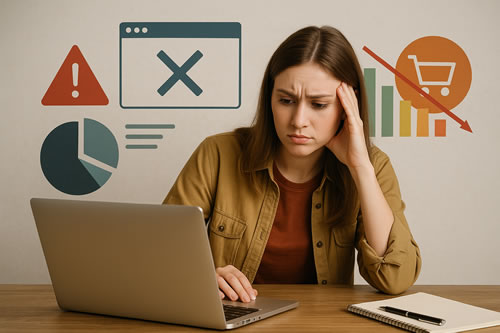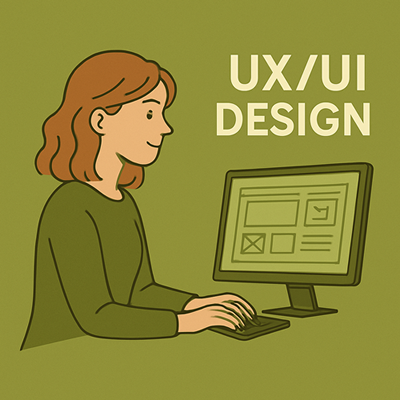Grateful for our clients
Gratitude has always shaped the way we run Grateful Web Services. Every client who chooses to work with us plays an important part in the growth of our web design business. Whether it is a website redesign project, WordPress development, support, or ongoing website maintenance, we remain genuinely grateful for the trust our clients place in us.
Working in web design and development means entering a space that feels personal. A website represents a business’s identity, mission, and story. When clients allow us to design or refine that story, we never take that responsibility lightly. As a result, client trust, gratitude, and long-term partnership continue to guide our approach to meaningful digital growth.
Why Client Trust Means Everything
Every project begins with trust. When a client hands us their brand, vision, content, and goals, they are entrusting an important part of their business to Grateful Web Services. That trust influences each decision we make, including layout and color choices, user experience optimization, and SEO improvements.
We appreciate clients who share clear goals and open communication, and we value those who believe in collaboration during the design process. In addition, long-term website improvements and ongoing support help build stronger outcomes and deeper relationships. Returning for updates, maintenance, and search engine support shows a level of confidence we never take for granted.
Because of this, trust creates better outcomes, improved communication, and websites that truly serve their audiences.
Learn more about our approach to design here
Gratitude in Web Design and Client Partnerships
Gratitude is at the center of how we operate. It helps me, our client’s dedicated Project Manager, show up with more patience, creativity, and attention to detail. As a result, client relationships grow stronger, and projects move forward smoothly, even when timelines, revisions, or technical challenges arise.
Here are a few ways gratitude shapes our work.
• Clear and thoughtful communication
This helps clients feel supported and confident throughout the project. We are always here to talk and don’t nickel and dime clients for phone calls.
• A service-first mindset
We focus on providing value at every step, whether it involves SEO, user experience, or performance optimization.
• Pride in delivering high-quality work
Gratitude encourages us to refine every detail and aim for exceptional results.
• Commitment to ongoing support
A website is not finished at launch. Continued care, updates, SEO refinements, and long-term partnership are essential.
How Client Referrals Support Small Business Growth
Referrals are one of the greatest compliments a business can receive. When a client recommends us to a friend, colleague, or another business owner, it signals that the work made a positive impact. Furthermore, referrals help small businesses grow organically and strengthen community connections.
A referral communicates trust. It says that we delivered a great experience and that Grateful Web Services will take care of the next client with the same dedication.
Referrals have helped us reach new clients, industries, and creative opportunities. If you have ever referred someone to us, thank you. Your support directly contributes to the success of our business.
Small business referral trends are supported by data from SCORE
How Gratitude Improves SEO, User Experience, and Digital Growth
It may not seem obvious at first, but gratitude directly influences search engine optimization and overall website success. Good SEO begins with understanding a client’s goals and creating content and design that support their audience.
Here are a few examples of how gratitude enhances digital outcomes.
• SEO content quality
Clear goals lead to better keyword planning and stronger blog posts.
• User experience design
A thoughtful approach creates easier navigation, better readability, and stronger engagement.
• Website longevity
Clients who feel supported remain active with updates, SEO enhancements, and content growth.
• Organic backlinks and mentions
Positive relationships often lead to natural sharing, which boosts visibility.
For more on SEO best practices, visit MOZ
How Our Clients Inspire Growth
Every client, project, and industry provides new challenges and learning opportunities. Our clients shape the direction of our business and continually push us to improve skills in web design, development, accessibility, mobile optimization, analytics, and digital strategy.
Whether we are building a nonprofit website, a Sacramento business website, a service-based business site, a WordPress ecommerce store, an SEO plan, or a redesigned online presence, each project expands our expertise and creativity.
Learn about our website maintenance care plans here
A Sincere Thank You
To every client we have worked with, thank you! We appreciate your trust, communication, referrals, and support. Most importantly, thank you for allowing us to do the creative work that we love.
Client trust, gratitude, and growth are at the heart of Grateful Web Services. I am truly grateful every day for the relationships and partnerships that make my work meaningful.

Laura Rider is the Founder, Lead Web Designer, Developer, and Project Manager at
Grateful Web Services
a Sacramento, California-based web design company helping small businesses and nonprofits create beautiful, accessible, and SEO-driven websites. Drawing from years of creative experience through her previous company, Cobalt Images, Laura combines design, strategy, and functionality to help clients grow online.












